Top 10: Concept cars that misled us completely
With the 2015 Frankfurt Motor Show just around the corner, we can look forward to a feast of futuristic concept cars. Each will show us what we can expect to see on our driveways in good time.
Or will they? Some concept cars make no attempt to resemble anything production viable, but here are ten that were supposed to point to a showroom car. Then left us very disappointed indeed...
Click here to follow all our coverage of the 2015 Frankfurt Motor Show
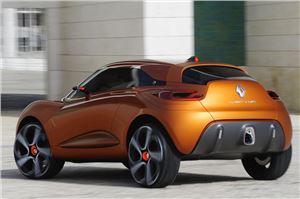
Renault Captur
Unveiled: Geneva Motor Show, March 2011
The Renault Captur is a perfect example of the wholesale dumbing down of a car from concept stage to production. The orange three-door you see above is made of carbon fibre and sits on 22-inch wheels. And even though everybody knows that those two features couldn’t possibly make it to the shop floor, it would have been nice to see at least some of this styling come to market.
The Captur is neither an ugly car nor a bad one, but it would have been a whole lot more exciting if it had looked anything like the concept.
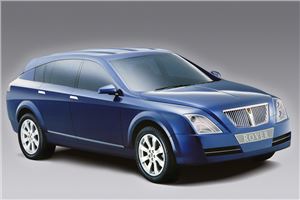
Rover TCV
Unveiled: Geneva Motor Show, March 2002
In 2002, Rover took the wraps off a concept estate car with a pleasing combination of striking looks and outstanding practicality – which it demonstrated by sticking a washing machine in the show car. The TCV showed off a bold new design language that would see Rover, hopefully, move into executive car territory in a far more modern way than the 75 had a few years earlier.
Just three years later, Rover would be dead.
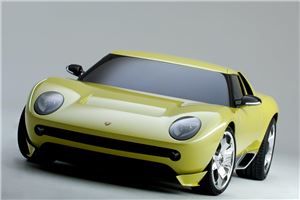
Lamborghini Miura
Unveiled: Paley Centre for Media, January 2006
To celebrate the 40th anniversary of the original Miura concept – spawning a production car that some still believe the most beautiful ever made – Lamborghini chose a private event to show a modern interpretation.
Taking the wraps off, Lamborghini’s boss said that "retro is not that what we’re here for, so we won’t do the Miura," which is like unveiling fire to Eskimos then saying "but it’s nicer being cold, so we’re taking our flint home with us." Still, the media was convinced this was a tantalizing ploy and that the Lamborghini would renege. It didn’t. Sadness still ensues.
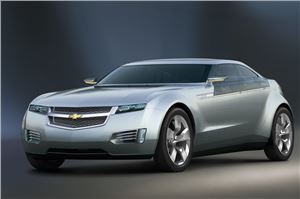
Chevrolet Volt
Unveiled: Detroit Motor Show, January 2007
In many ways the 2007 Chevrolet Volt concept didn’t mislead us at all. It was in fact the first production-ready mass market plug-in hybrid ever shown. GM even revealed roughly how it was going to work, by using a petrol generator to charge the battery, but never driving the wheels, thus eradicating range anxiety and giving this unusual sort of electric car phenomenal mpg rating.
But the visual difference between what we saw in 2007 (a fresh and futuristic take on the hatchback) and what we got in 2010 (a backside heavy Insignia clone) was truly disappointing. It’s not that the production Volt looks bad, it’s just that, as you can see above, it could have been much, much better than it turned out.
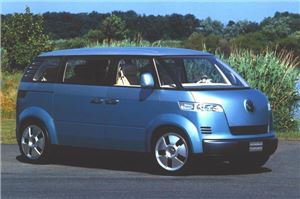
Volkswagen Microbus
Unveiled: North American International Auto Show, January 2001
In 2001 Volkswagen intimated a true, actual rebirth of the iconic Type 2 camper van when it unveiled the Microbus Concept. A year later the company announced that it would be produced in 2003. In 2005 the project was cancelled.
And that’s why today’s camper van is called California and made from the shell of a plain old Transporter van. There’s nothing wrong with that, necessarily, but let’s be honest, which would you rather have: the Microbus above or a kitchen-equipped panel van?

Suzuki Kizashi
Frankfurt Motor Show, September 2007
Suzuki did three Kizashi concepts. All were slightly different, but none of them anything like the Kizashi saloon that Suzuki eventually brought to the UK. The car above, a five-door coupé-cum-estate, was the first.
Imagine if Suzuki had sold something like this, instead of the bland, petrol-only, four-wheel drive four-door that it actually brought to showrooms? It most probably would have lasted a little longer than the production Kizashi managed before Suzuki withdrew it from sale in the UK - just one year.
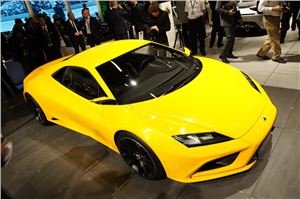
Lotus Elan
Unveiled: Paris Motor Show, September 2010
The Paris Motor Show 2010, also known as ‘the motor show when Lotus went insane', was the scene for Lotus spelling out how it was going to shortly take over the world. It did so in a flurry of celebrities and concept cars, all of which looked bizarrely familiar (the cars, not the celebs).
They were all pretty, but probably the prettiest was the Elan. It was due on sale by 2013, said Lotus (or possibly Brian May, or Naomi Campbell), would replace the Evora and have 450PS. It didn't happen and nor did any of the other cars on display - Elise, Elan, Elite, Esprit, Eterne. The rumour that all the show cars stocked up on Toblerone then drove to Dundee is uncorroborated.
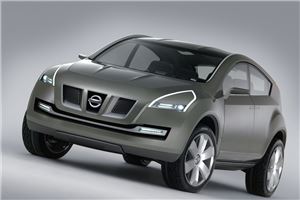
Unveiled: Geneva Motor Show, March 2004
When Nissan turned up to the 2004 Geneva Motor Show with an oddball, SUV-looking concept in 2004, we had no idea that it would spawn not only Nissan’s most popular car ever, but a whole new wave of family cars.
Completely watering down the styling of the concept was probably the wisest thing Nissan could have done – it’s difficult to conceive that something this bold would have sold anywhere near as well. The rather more plain Qashqai took over Europe, looking nothing like the concept that produced it.
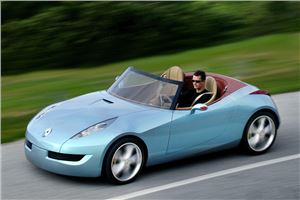
Renault Wind
Unveiled: Paris Motor Show, September 2004
A rare, possibly unique, example of a production car being wackier than the concept car, the Wind concept was a beautiful thing. A well-proportioned two-door roadster that looked every inch the classy Mazda MX-5 alternative, the 2004 concept was spot on.
In 2010 the production Wind came. And it was like Heidi Klum had taken part in Extreme Makeover and come back looking like Jimmie Krankie. Ungainly, disproportioned, impractical and slow, the Wind made the Nissan Micra C+C look positively Hollywood.

Lagonda SUV
Unveiled: Geneva Motor Show, March 2009
It was March 2009 and there we were, reeling after the credit crunch and waiting in a big Swiss leisure centre for a flurry of new post-recession motors. They’d all be made of cardboard composite and run on the souls of City bank employees, probably.
Then Aston Martin wheeled the Lagonda SUV out. It was massive, brashly styled, had a V12 petrol engine, would be ludicrously expensive and was absolutely out of kilter with the mood of the time. Choosing March 2009 to revive its century old super-luxury brand was like - well, it might as well have handed recordings of the press conference out on VHS cassettes. The project was quickly canned, reappearing five years later on a much more tasteful saloon, at a much more tasteful time.
